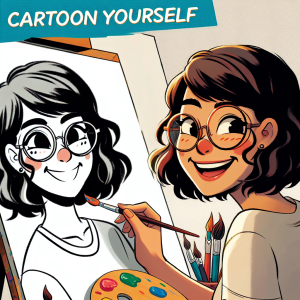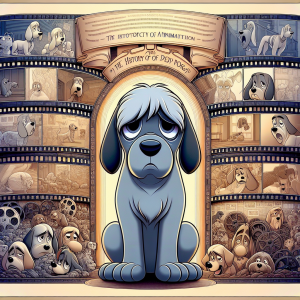When it comes to cartoon characters, there are few as iconic as the bulldog. From Tom and Jerry’s Spike to the beloved Looney Tunes character Marc Antony, bulldogs have been a staple in popular culture for decades. Their evolution in cartoons has been fascinating, reflecting the changes in society and the shifting attitudes towards this beloved breed. In this article, we will take a closer look at the evolution of bulldog cartoons and their impact on pop culture.
The Early Days: Stereotypes and Representation
In the early days of animation, bulldogs were often portrayed as aggressive and menacing. They were frequently used as the antagonist in cartoons, chasing after the protagonist in a comical yet threatening manner. This representation of bulldogs reflected the general perception of the breed at the time, seen as fierce and intimidating animals.
One of the most famous bulldogs from this era is Spike, the bumbling but lovable bulldog from the Tom and Jerry cartoons. Spike was often used as the foil to Tom the cat, serving as a protective father figure to his son Tyke. While Spike was initially portrayed as intimidating, over time, his character evolved to become more sympathetic, showcasing a softer side and challenging the traditional stereotypes associated with bulldogs.
Shifting Stereotypes: Bulldogs as Heroes
As attitudes towards bulldogs began to change, so did their portrayal in cartoons. In the 1950s and 1960s, bulldogs started to be depicted as heroic and noble characters. This shift in representation aligned with the changing public perception of bulldogs, as they became more popular as family pets and companions.
One of the most notable bulldog heroes from this era is Marc Antony, the gentle giant from the Looney Tunes cartoons. Despite his imposing size and strength, Marc Antony is a kind-hearted and caring character, often seen protecting his diminutive friend, Pussyfoot, from harm. This portrayal of a bulldog as a gentle protector helped to reshape the image of the breed and challenge the traditional stereotypes that had been prevalent in earlier cartoons.
Modern Representations: Bulldogs as Endearing Characters
In recent years, bulldogs have continued to evolve in their portrayal in cartoons, becoming increasingly endearing and comedic characters. Their rugged appearance and distinctive personalities have made them fan favorites, often providing comic relief and heartwarming moments in animated series.
Bulldogs like Spike and Marc Antony have paved the way for modern characters like Meathead from “Sherman’s Lagoon” and the lovable Bull Dog from “The Powerpuff Girls.” These characters have continued to showcase the charm and appeal of bulldogs, further solidifying their place in pop culture as beloved and iconic figures.
The Impact on Pop Culture
The evolution of bulldog cartoons has had a significant impact on pop culture, shaping the public perception of the breed and influencing the way they are viewed in society. Through their portrayal in cartoons, bulldogs have transitioned from being feared and misunderstood to being celebrated and admired for their unique qualities.
Furthermore, bulldog cartoons have helped to humanize the breed, allowing audiences to connect with them on an emotional level and appreciate their complex personalities. This has undoubtedly contributed to the growing popularity of bulldogs as pets, with many people being drawn to their lovable and resilient nature, traits that have been beautifully depicted in animated form.
Overall, bulldog cartoons have played a crucial role in reframing the narrative surrounding the breed, promoting a more positive and empathetic understanding of bulldogs in popular culture. Their influence has extended beyond the world of animation, impacting the way bulldogs are perceived and celebrated in all forms of media.
FAQs
What are some of the most iconic bulldog cartoon characters?
Some of the most iconic bulldog cartoon characters include Spike from Tom and Jerry, Marc Antony from Looney Tunes, Meathead from “Sherman’s Lagoon,” and the Bull Dog from “The Powerpuff Girls.”
How have bulldog cartoons influenced the perception of the breed?
Bulldog cartoons have played a significant role in reshaping the public perception of the breed, transitioning them from being feared and misunderstood to being celebrated and admired for their unique qualities. Their portrayal in cartoons has humanized bulldogs, allowing audiences to connect with them on an emotional level and appreciate their complex personalities.
What impact have bulldog cartoons had on popular culture?
The evolution of bulldog cartoons has had a substantial impact on popular culture, shaping the public perception of the breed and influencing the way they are viewed in society. Through their portrayal in cartoons, bulldogs have transitioned from being feared and misunderstood to being celebrated and admired for their unique qualities. Their influence has extended beyond the world of animation, impacting the way bulldogs are perceived and celebrated in all forms of media.
In conclusion, the evolution of bulldog cartoons has been a fascinating journey, reflecting the changing attitudes towards the breed and their impact on popular culture. From their early representations as intimidating adversaries to their current status as beloved and iconic characters, bulldog cartoons have left an indelible mark on the way we perceive and appreciate this remarkable breed.








+ There are no comments
Add yours